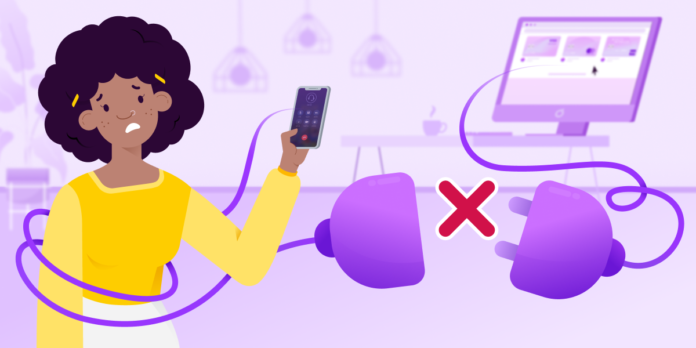For just a moment, think only about your own experiences as a customer–outside of your professional responsibilities–consider interactions you’ve personally had with companies throughout your lifetime.
Think about how it feels, when this happens to you:
You have some issue with your account, or you’re searching for some information or maybe you’re even trying to order something. You start first by going to Google, and then to the company’s website or app. You navigate around for a while trying to figure out how to get whatever you need. Maybe you even initiate a chat session–with a few pauses along the way as you type your questions and wait to hear back from the chat agent.
Eventually–after some period of time–you realize (or are told): You have no choice, but you’re now gonna have to call Customer Service on the phone. Oh, boy… here we go!
How does that FEEL? We all know…it feels like a giant pain. You’re going to have to go through a maze of voice menus and authentication, hoping to pick the right response, wait on hold (for an undefined period of time) and finally someone starts talking to you and now you’re gonna have to explain your whole issue all over again from the beginning. Even as you’re even dialing 10 digits–you’re thinking: This next part is probably gonna be a BFH (big fat hassle). Right?
And now that the vast majority of us are living a digital-first lifestyle (defined as: our first instinct is to go to our screen(s) when we have a need and try to self-serve online) the feeling of dread we’ve developed as a society about having to call Customer Service on the phone, is now being multiplied many times over. Dread squared; D2.
Maybe there was never a time when calling Customer Service was something to look forward to, but for today’s customers the very fact that you’re making me call just doesn’t feel like “you’re meeting me where I am.”
“Today’s gonna be a great day because I get to call Customer Service!”
– No one ever
Diffuse the Disconnect
So now…snap back into the reality of your responsibilities to your company and your customers. Take a moment and think about WHY digital-first customers hate calling on the phone so much. There’s a reason.
It’s not so much that customers hate calling or even talking to a person (a common myth). What they hate is The Disconnect. Their on-screen experience isn’t connected in any way to their off-screen phone experience. When they finally get to speak to one of your CSRs, their whole interaction has to start all over again. The CSR has no idea what this person has just been doing online, or for how long, and starts asking a million authentication and diagnostic questions that the customer already answered online on YOUR website! Everything I just did was a total waste of time and effort.
THAT is the part customers have come to loathe. The disconnect.
And now, think about how many times you’re making your customers feel that way. There’s a simple formula:
- Number of live phone calls your company receives each month
- Multiply that number by .84–since 84% of all customers initiate service interactions online, even if they later had to call on the phone
So, for every 10,000 customers who are reaching out to you and talking to your CSRs, you’re creating The Disconnect for 8,400 of them. Hey, it’s not like you’re personally trying to disrespect them or intentionally create an annoyance–but that’s what’s happening.
But every time you’re subjecting a customer to The Disconnect, you’re hurting yourself in two critical ways:
- The phone interactions you’re having with digital-first customers are grossly inefficient
- The Service experience is far worse for customers–subjecting you to unnecessary disloyalty risks
Now that customer expectations and behaviors are so different–by continuing to force people to call you on the phone to speak with a live person you are creating a lose-lose proposition. You’re hurting yourself twice.
And if companies had no choice but to accept all that and suck it up, well then, that would be too bad for everyone. But you don’t have to. There’s a way to solve for The Disconnect.
Through Digital Customer Service (DCS), companies can enable their customers to ask for live assistance in the middle of any online interaction, any time they choose–and a live Agent pops up on the customer’s own screen through OnScreen Voice. That Agent (who you as the customer invited into YOUR digital interaction) already knows who you are, and is already working to resolve your issue before you even have to explain it. It is a completely seamless, effortless experience.
The companies that are enabling their customers to have THAT kind of experience–have solved for The Disconnect. And in doing so, they are reaping significant benefits–reversing the polarity of the economics of Service, by creating a far superior CX, while actually reducing the overall cost of serving their customers.
Final Thought: If you were aware of a strategy that could either greatly reduce costs or improve the experience of your customers, you’d want to give it serious consideration, right? But if there was a way to achieve both simultaneously–exploring that option would have to be near the top of your to-do list. The true danger of The Disconnect is that most companies don’t even understand how badly it’s hurting you. But now you do. And it’s totally fixable.





